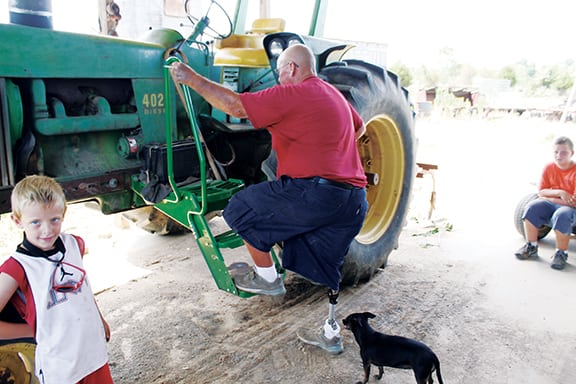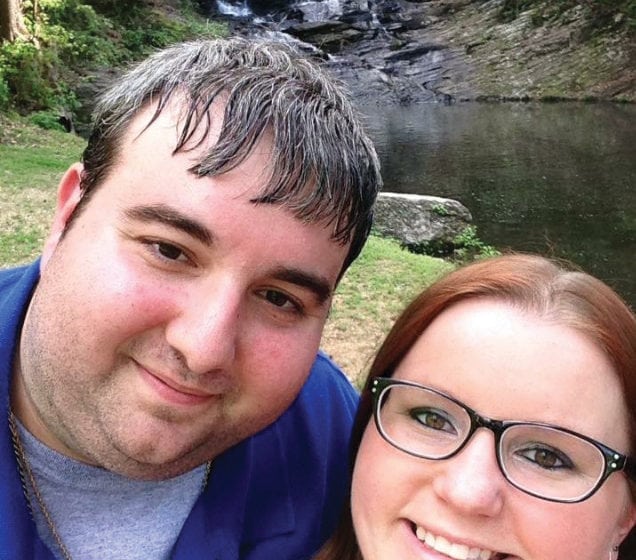By Elan Young
Losing one or more limbs can send a person reeling. Along with learning how to manage pain, mobility, and accessibility can come fear about fitting back into the work world. Unfortunately, not everyone who experiences a sudden disability has employment that they can return to, and seeking new employment can be stressful even under the best circumstances.
However, it should be comforting to know that many amputees, regardless of their level of amputation, return to work—whether with modifications at their current job or in new careers that bring meaning and fulfillment. In fact, some people discover that one major change in their life provides an opportunity to re-evaluate it at all levels—including their profession.

While finding a new career is a challenge, programs exist to help people get back on track. The following programs have helped many amputees discover new life in meaningful employment:
1. Ticket to Work is a free employment services program under the U.S. Social Security Administration. Its purpose is to help beneficiaries find employment or start a business to become financially independent, while allowing them to keep Medicare, Medicaid, and some or all of their cash benefits during the transition. The program also includes provisions to help participants regain benefits if they later discover that they can no longer work because of their medical condition. Individuals 18 through 64 years old who receive Social Security benefits because of a disability probably already qualify for the program.
Marty Davis, a former self-employed general contractor who lost his left arm to cancer in 2007, is a great example of the program’s success. Davis started looking for a job through the Ticket to Work program a few years ago, and after working with a benefits counselor, he was hired in 2013 by Legere Restorations, Schenectady, New York, as an estimator and project manager. Because he could pursue employment without risking losing his benefits, Davis was empowered to take the step forward toward pursuing a new career. For more details about Davis’ back-to-work story, visit www.choosework.net/library/marty-success-story. For more information about the Ticket to Work program, visit www.choosework.net.
2. AgrAbility is a national program designed to enhance the quality of life of farmers, ranchers, and other agricultural workers with disabilities. Its goal is targeted to the individual, and success can be defined differently for various participants. Some people find work in production agriculture or a related occupation or receive access to appropriate assistive technology needed for work and daily living activities. The program also helps connect participants with evidence-based information related to treatment and rehabilitation, provides vocational counseling, and offers targeted support for their caregivers. It has helped workers modify their equipment, homes, and work areas to make them accessible; acquire specialized wheelchairs or utility vehicles for mobility; and acquire adaptive equipment such as specialized prosthetic devices and tools, including the N-Abler wrist unit and tool system from Texas Assistive Devices (www.n-abler.org).
According to Joetta T. White of Tennessee AgrAbility, in 2000, a longtime livestock producer and bilateral above-knee amputee received assistance from the Tennessee AgrAbility Project, Tennessee Vocational Rehabilitation (VR) Service, and JH Contracting to install a standing tractor lift. Using the same process, he recently received two additional lifts for two tractors, which enable him to continue farming without the risk of secondary injuries. VR and the United States Department of Veterans Affairs also provided assistance with bathroom modifications, ramps, and a wheelchair for another lower-limb amputee in Tennessee, White notes.
There’s a wealth of resources on the organization’s website, including free online training. For more information, visit www.agrability.org.
3. Centers for Independent Living (CILs) were born out of the civil rights movement in the 1960s when some people with significant disabilities were released from nursing homes and institutions and given an opportunity to live independently. CILs are community-based, cross-disability, nonprofit organizations that are designed and operated by people with disabilities. The centers are unique because they operate according to a strict philosophy of consumer control, wherein people with all types of disabilities directly govern and staff them. Today, 403 CILs in 56 statewide Independent Living Councils provide peer support, information and referral, individual and systems advocacy, independent living skills training, and transition. These organizations offer a variety of services to help people with disabilities find and maintain employment. For a directory of centers, visit www.ncil.org.

4. The Job Accommodation Network (JAN) is a resource for free guidance on disability employment issues and reasonable workplace accommodations. Reasonable accommodations are loosely defined as adjustments or modifications to a job or work environment to enable people with disabilities to accomplish their essential employment responsibilities and to ensure they receive the same privileges and rights as other employees. The organization uses one-on-one consultants to offer guidance on accommodations, the Americans with Disabilities Act (ADA) and related legislation, and self-employment and entrepreneurship options for people with disabilities. Its services help private employers of all sizes, government agencies, employee representatives, service providers, people with disabilities, and their families. JAN consultants can often help employers find inexpensive or free solutions to accessibility and equality issues in the workplace, which give employers confidence that they can hire people with disabilities without incurring exorbitant expenses.
For more information, visit https://askjan.org.
5. VR centers exist in each state to help people with disabilities find meaningful employment. The rehabilitation process prepares individuals for employment through individualized evaluation and counseling to support work goals that match their capacity. Since helping people return to work is a priority, VR centers can offer a wide range of assistance that helps accomplish this goal. For example, they may provide funding to start or grow a business; provide a prosthesis, wheelchair, vehicle, or tools needed for work; or provide adaptive driving equipment to get to and from the workplace.
For information about your state’s VR agency and how it can help you, visit http://tinyurl.com/nd4vspl.
For those amputees who are unable to return to a previous career or who just want to pursue a new dream, it may be necessary to acquire additional knowledge and skills. While retraining through VR is right for some, going to college may be right for others. Although many amputees may be able to attend a traditional college, others, especially those with mobility problems, may want to consider pursuing a degree from an accredited online school. These days, such schools offer many majors and are gaining wider acceptance. To help students with limb loss pay for their education, many scholarships are available specifically for amputees and their dependents or for those with certain medical conditions. For more information, visit www.top10onlinecolleges.org/scholarships-for/amputees and www.disabilityscholarships.us.
Joseph Rapisardo, a 31-year-old resident of Tallahassee, Florida, was born with bilateral fibular hemimelia, a condition in which part or all of the fibula bone is missing. In his case, he was missing the entire fibula in each leg as well as three toes, and his right leg was also shorter than the other. He wore leg braces and a left-footed shoe on his right foot until the sixth grade when he had his first amputation, followed by his second as a senior in high school.
When he graduated from Florida State University in 2009, he sought VR’s assistance for finding employment in Tallahassee. Not only did they assist him with finding employment, but they also were able to get him an interview with VR. In 2010, he was hired as a VR technician and has since been promoted three times. Now he’s a consultant handling a large caseload and providing mentorship to new staff. “I enjoy the field I am working in, as it gives me the opportunity to give back to those with disabilities,” he says.
Rapisardo handles all prosthetic cases in Tallahassee and has enjoyed being able to help other amputees. “Each day, I get to meet with or speak to someone with a disability, and it also allows me to share my story,” he says. “I tend to have the ability to relate to most clients because I have been where they are, and that gives them confidence that they too can find employment.”
His position also allows him to encourage youths with disabilities to never give up on their dreams and to never allow anyone to discourage them from doing something they want. “With technology today, anything is possible,” he says.



